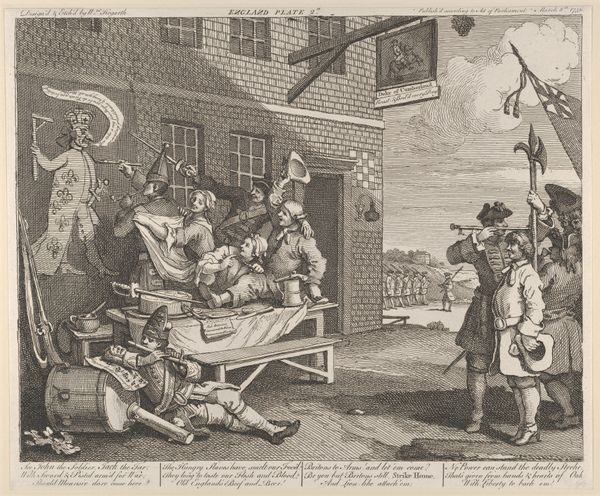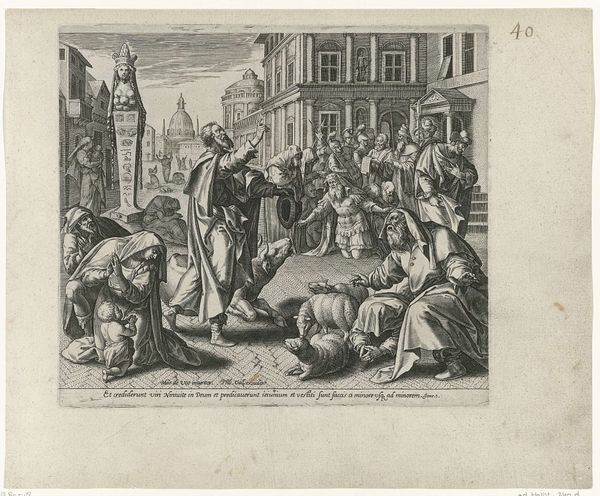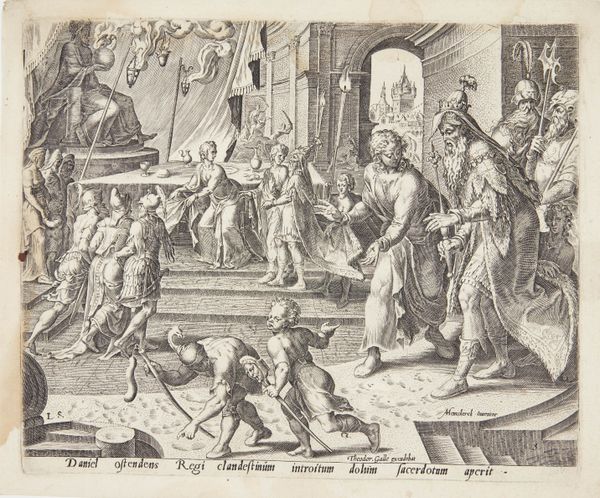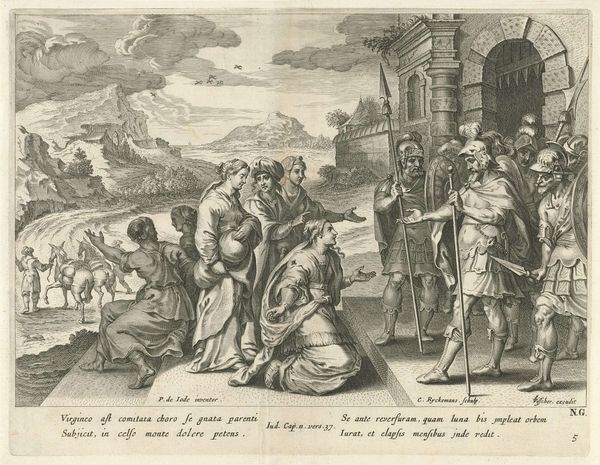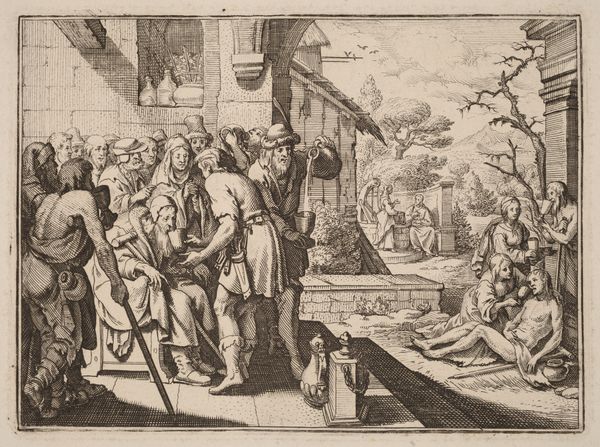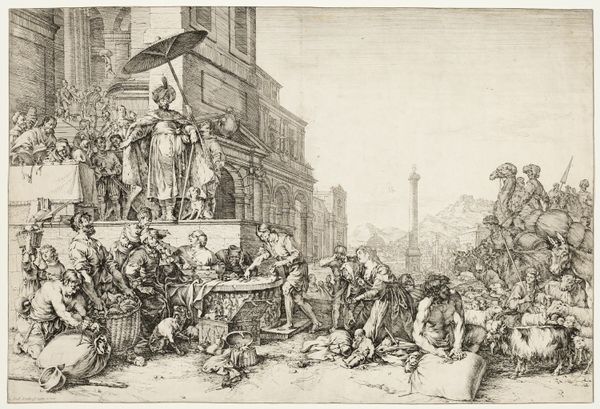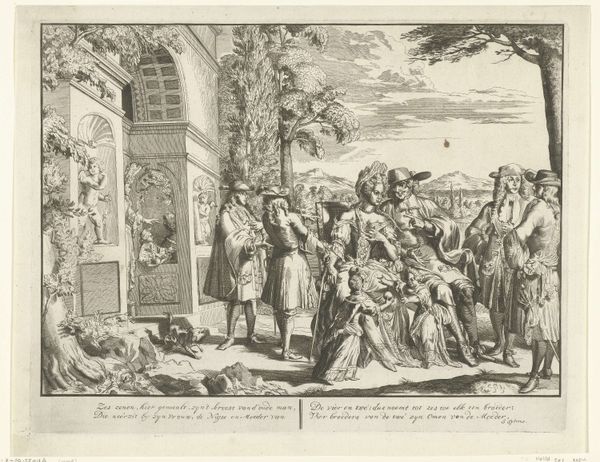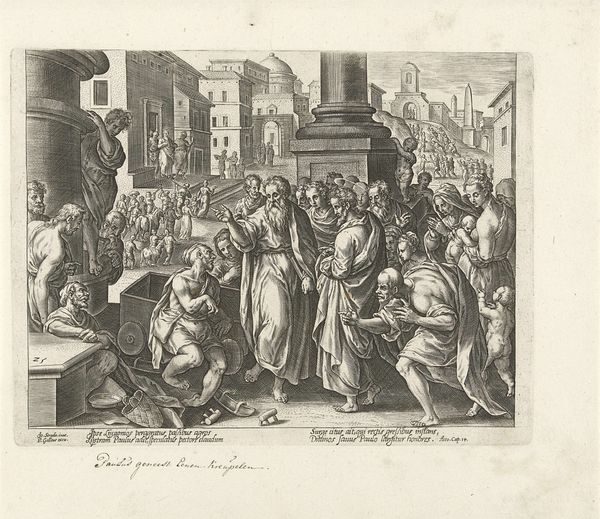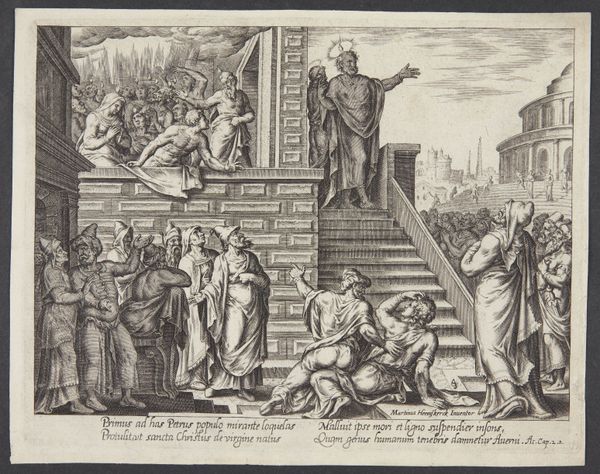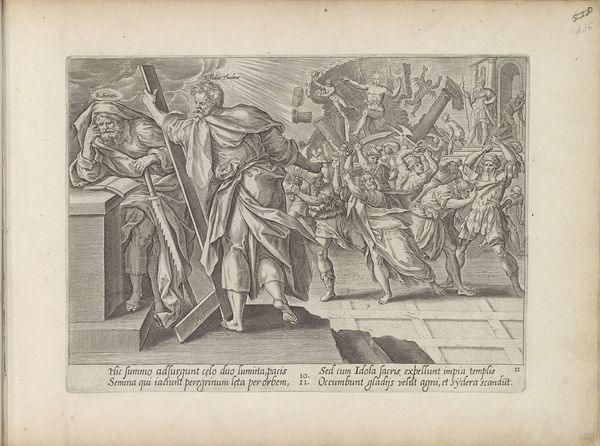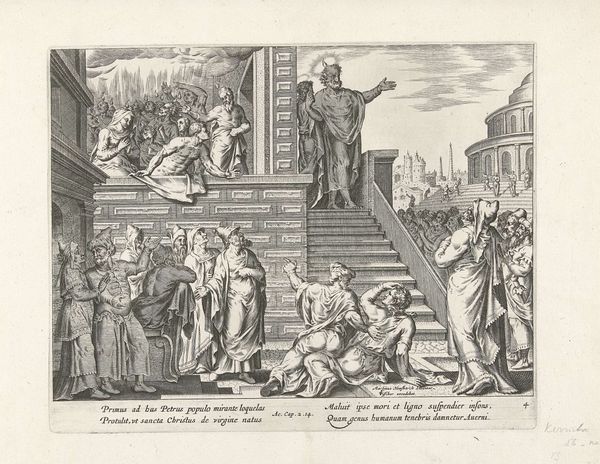
print, engraving
#
narrative-art
#
baroque
# print
#
figuration
#
history-painting
#
engraving
Dimensions: height 412 mm, width 520 mm
Copyright: Rijks Museum: Open Domain
Curator: Before us, we have a print dating from between 1652 and 1702, housed here at the Rijksmuseum. It depicts the biblical narrative of Joseph selling grain as Viceroy of Egypt. The anonymous artist chose the medium of engraving to illustrate this scene. Editor: What strikes me is the sheer spectacle! It's teeming with figures—wealth, desperation, and dogs, for some reason—all jammed into a single, meticulously etched space. Talk about visual overload. Curator: Indeed. Formally, the composition is structured around the elevated platform where Joseph, with his parasol and regal stance, oversees the distribution. The use of line is exquisite; notice the intricate detail in the architectural rendering and the contrasting textures achieved through varied hatching. Semiotically, this elevates Joseph’s status and reinforces the theme of divine providence during famine. Editor: Sure, "providence" if you’re Joseph! I see those figures scrambling for food—it's a poignant tableau of suffering and hierarchy. The contrast is harsh, though: Joseph’s up there with his tiny dogs like everything's A-Okay. Curator: The artist strategically utilizes chiaroscuro to amplify the emotional impact. The dark, crowded foreground where the impoverished masses clamor, contrasts sharply with the brighter, more open space around Joseph, which serves to further highlight the dichotomy between power and need. It speaks volumes about socioeconomic disparities of the time, reflecting social themes as they extend even into the historical. Editor: Agreed. But there’s a touch of almost… I don't know… theatrical absurdity in it. The architectural backdrop looks like an opera set, the parasol seems a bit much, even for the Bible! It makes me think this scene, despite its gravity, borders on melodrama. What I want to know is—who is feeding those tiny, fluffy dogs? Curator: Those details are not documented, yet still serve the image well to fulfill the representation’s purpose. Perhaps, the dogs can be interpreted as symbols of faithfulness, loyalty and status? Editor: Fair point, good eye. Looking again, the formal elegance is undeniable and gives us plenty to think about today. Curator: Yes. It serves as a potent reminder of how artistic mastery elevates even historical narrative.
Comments
No comments
Be the first to comment and join the conversation on the ultimate creative platform.
